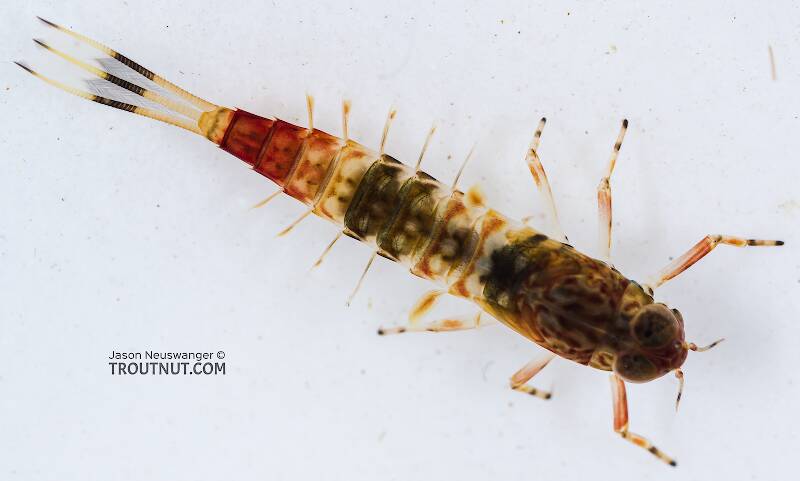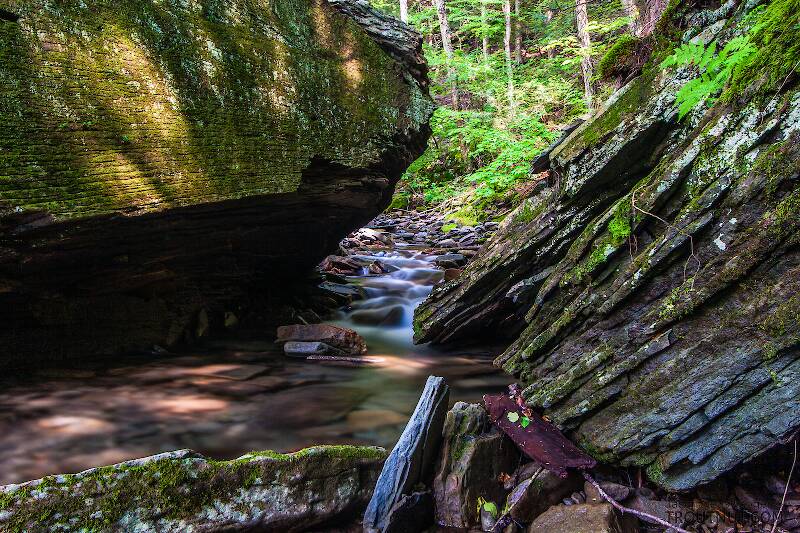
Blue-winged Olives
Baetis
Tiny Baetis mayflies are perhaps the most commonly encountered and imitated by anglers on all American trout streams due to their great abundance, widespread distribution, and trout-friendly emergence habits.


Mayfly Species Ameletus cooki (Brown Duns)
Species Range
Physical description
Most physical descriptions on Troutnut are direct or slightly edited quotes from the original scientific sources describing or updating the species, although there may be errors in copying them to this website. Such descriptions aren't always definitive, because species often turn out to be more variable than the original describers observed. In some cases, only a single specimen was described! However, they are useful starting points.
Male Spinner
Wing length: 8 mm
A small clear-winged species. Head blackish. Prothorax and postero-lateral portions of the mesothorax and metathorax also blackish. Mesothorax brown dorsally, with orange shading before the wing root and on and before the scutellum. Pleura and sternum largely blackish, shaded with orange at the bases of the legs, most prominent around the middle legs.
Fore legs blackish brown; middle and hind legs lighter brown, the basal joints tinged with orange-brown. Wings hyaline; longitudinal veins light amber, the cross veins pale and indistinct, except in the stigmatic area, where they are smoky.
Dorsum of abdomen orange-brown. Suffused brown shading along the lateral margin, tending to form obscure semi-triangular patches in the postero-lateral corners; sometimes extending narrowly along the posterior margin. Trachea of the anterior segments forming a black network. Sternites 2-6 dull hyaline whitish, with traces of orange on the ganglionic areas. Sternites 7 and 8 opaque, bright yellowish; sternite 9 largely blackish brown shaded with orange. Forceps base yellowish. Penes long and rather slender, each bearing a spine on the inner margin near the middle; penes curved only at tip (see fig. 116). Tails dirty whitish, the joinings dark.
Specimens of the Mayfly Species Ameletus cooki
1 Nymph

I keyed it out under the microscope using Larvae and adults of Ameletus mayflies (Ephemeroptera: Ameletidae) from Alberta with slightly larger (10 mm), mature specimen with darkened wingpads. Microscope pictures are from that specimen. The characteristics in the key and most of the verification table point pretty clearly to Ameletus cooki, except that the coloration of the antennae more closely resembles Ameletus sparsatus. However, on other characteristics in which these species differ (spines on the dorsal surface of the front femora, which seem very short in this specimen; length of posterolateral spines on segments 8–9; length of spines on posterior edge of tergites 6–9), this is a better match for cooki, and that's probably the correct ID.
Start a Discussion of Ameletus cooki
References
- Caucci, Al and Nastasi, Bob. 2004. Hatches II. The Lyons Press.
- Knopp, Malcolm and Robert Cormier. 1997. Mayflies: An Angler's Study of Trout Water Ephemeroptera . The Lyons Press.
- Needham, James G., Jay R. Traver, and Yin-Chi Hsu. 1935. The Biology of Mayflies. Comstock Publishing Company, Inc.
Mayfly Species Ameletus cooki (Brown Duns)
Species Range
Common Names
Resources
- NatureServe
- Integrated Taxonomic Information System
- Global Biodiversity Information Facility
- Described by McDunnough (1929)

